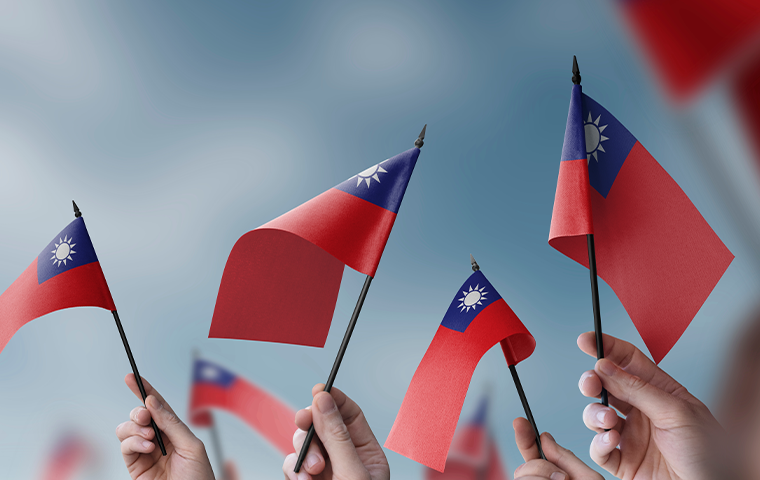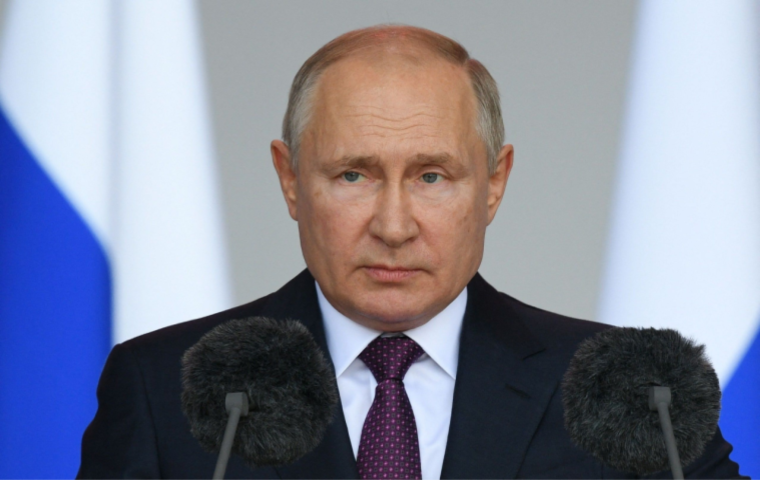Tsai’s U.S. Visit: Its Diplomatic Strategy and the Cross-Strait Situation
Related Articles

For the president of Taiwan (Republic of China), which has diplomatic relations with just 13 countries as of May 2023, visits abroad are not that often. Moreover, those that have diplomatic ties with Taiwan are all small countries, and aside from the Taiwan authorities, they have practically no influence on Taiwanese social life or the international community.
The global COVID outbreak put a stop to Taiwan President Tsai Ing-wen’s foreign visits. Her trip to Guatemala and Belize from March 29 to April 7 was the first travel abroad in her second term. Yet, global attention was on the unofficial activities in the U.S. during her so-called transit.
Immediately after then U.S. House Speaker Nancy Pelosi’s Taiwan visit in August 2022, China’s People’s Liberation Army (PLA) conducted a massive-scale military exercise. It was recognized as the Fourth Taiwan Strait Crisis, following the First (1954-1955), Second (1958), and Third (1995-1996). Then, what was Beijing’s reaction to Tsai’s latest U.S. visit?
Active Mutual Visits by U.S. and Taiwan Senior Officials
Despite all the attention, a U.S. visit by the Taiwan president “is commonplace and it has happened before,” according to National Security Council spokesperson John Kirby. Since becoming president in 2016, Tsai stopped over a total eight times in the U.S. mainland for unofficial activities during her trips to Central and South America and Caribbean nations. Apart from the U.S. mainland, she has engaged in unofficial activities three times in Honolulu and Guam when traveling to the Oceanian countries.
With the passing of the Taiwan Travel Act in March 2018, U.S. government officials at all levels, including cabinet members and senior military officers, could visit Taiwan, and Taiwanese senior officials could visit the U.S. and meet with U.S. counterparts from the State Department, Pentagon, and other agencies. Already, Deputy Assistant Secretary of Defense Heino Klinck visited Taiwan in 2019, as well as Health Secretary Alex Azar and Under Secretary of State Keith Krach in 2020. In 2023, Pentagon’s top China official, Deputy Assistant Secretary of Defense Michael Chase, traveled to Taiwan. From the military side, Navy Rear Admiral Michael Studeman, who oversees intelligence at the U.S. Indo-Pacific Command, took a government flight to Taipei in November 2020.
For some time, the Vice Minister for Armaments at Taiwan’s Ministry of National Defense (army general) has been attending the annual U.S.-Taiwan Defense Industry Conference. Since the passage of the Taiwan Travel Act, senior officials from Taiwan have been meeting with their American counterparts in Washington, D.C. and other U.S. venues. In 2019, Taiwan’s National Security Council Secretary-General David Lee met with U.S. National Security Adviser John Bolton. In February 2023, Taiwan’s Secretary General of National Security Council Wellington Koo (same rank as heads of the five Yuans, including the Executive Yuan and Legislative Yuan) and Foreign Minister Joseph Wu met unofficially with U.S. Deputy Secretary of State Wendy Sherman and Assistant Secretary of Defense Ely Ratner in the Washington, D.C. area.
Tsai’s Subdued Activities in the U.S.
For her latest visit, Tsai chose a stopover in New York on her way to Central America. Home to the United Nations headquarters and a major finance and commerce center, New York is the most prestigious U.S. city for the Taiwan president’s transit.
Arriving in New York on March 29, Tsai attended a banquet that evening hosted by the local Taiwanese. On the morning of March 30, she visited a store run by second-generation Taiwanese. The itinerary of Taiwan’s ruling party leaders always includes such exchanges with the ethnic and overseas Taiwanese. This is because voters residing abroad can return to Taiwan to cast a presidential election ballot, if they meet certain conditions specified in the President and Vice President Election and Recall Act. Also, the image of a dinner reception packed with ethnic and overseas Taiwanese will appear in the Taiwan media, letting the ruling camp demonstrate increasing momentum toward the presidential election.
In the afternoon of March 30, at the Taipei Economic and Cultural Office in New York, Tsai attended a reception with the UN ambassadors from the countries with diplomatic relations with Taiwan. In 2017, there was a party inviting the UN ambassadors from 17 such countries. But this time, only the attendance of the UN ambassador from the Marshall Islands was revealed, so it seems the Taiwanese authorities took care to avoid wide coverage.
That evening, she made a speech at the conservative think tank Hudson Institute. Speaking events at prominent think tanks is something the ruling and opposition party leaders like to do when they travel abroad, held as a public or closed event. The main objective is to appeal their policies to the U.S. authorities and the public through their speech. Finishing all activities in New York on March 31, she flew to Guatemala, the first destination of her trip.
On her return trip, Tsai arrived in Los Angeles from Belize in the afternoon of April 4. All eyes were on the meeting with U.S. House Speaker Kevin McCarthy in the morning of April 5, at the Ronald Reagan Presidential Library in Simi Valley, California. McCarthy, appointed as House Speaker in January 2023, initially considered visiting Taiwan, but Beijing obviously opposed this. Although McCarthy said, “China can’t tell me where and when I can go,” his visit was put off in the end.
There are reports that many in Taiwan consider it reflected the intention of the Biden administration that wanted to avoid military conflicts with Beijing. Yet, if the U.S. House Speaker visits Taiwan less than a year after Pelosi’s last visit, it is easy to imagine a stronger reaction from Beijing. So, it seems the Taiwanese authorities tried to seek middle ground with McCarthy to prevent that, and both sides reached an agreement in early March. The U.S. Congressional delegation for Pelosi’s visit had consisted of only Democrats, but this time, a bipartisan group of House lawmakers attended the meeting. At the joint press conference after the meeting, McCarthy stressed that point, saying, “Today was a bipartisan meeting—Republicans and Democrats united together.”
President Reagan is known to have communicated to President Chiang Ching-kuo the “Six Assurances,” which states policies on Taiwan, such as the U.S. has not agreed to set a date for ending arms sales to Taiwan, and has not agreed to hold prior consultations with China regarding arms sales to Taiwan. So, to demonstrate stronger U.S.-Taiwan ties, there was no better setting than the Reagan Library, while for Tsai, it was her second visit since 2018. Thus, the impact on Beijing may have been somewhat suppressed.
In the joint press conference, McCarthy said, “I believe our bond is stronger now than at any time or point in my lifetime,” hailing Tsai’s achievements. Tsai said, “Taiwan strives to be a reliable partner to the world, a cornerstone for stability in the region,” expressing her determination to further enhance bilateral relations, appealing the efforts towards maintaining the status quo in the Taiwan Strait. However, Tsai did not accept questions from the reporters, probably to avoid rocking the boat.
China Shows Milder Response Than Last Time
Then, how was Beijing’s response? I believe the Chinese military exercise in response to Tsai’s U.S. visit did not have the scale and content to be deemed as the “Fifth Taiwan Strait Crisis.”
First, when then House Speaker Pelosi visited Taiwan in 2022, Beijing announced conducting exercises immediately after the U.S. delegates arrived in Taipei, but it did not this time. Moreover, in Pelosi’s case, Beijing waited until the delegation left Taiwan to begin the exercises in anticipation of unexpected accidents. Since the recent meeting was in the U.S., there was no need to wait, but Beijing still took time before starting the drill. This is probably because Tsai’s visit coincided with former Taiwan President Ma Ying-jeou’s visit to China. Ma left China on April 7, and the PLA exercises began on April 8, a day after Ma returned to Taiwan. By prioritizing hospitality toward Ma over pressuring Taiwanese voters with military exercises, Beijing probably wanted to induce support for the Kuomintang (KMT) among Taiwanese voters. The announced duration of the exercise was four days last time, but three days this time.
Second, in the latest military exercises, the PLA did not set a sea and air space surrounding Taiwan, nor did it fire missiles that flew over Taiwan main island and landed in the sea. Third, last time, a large-scale cyberattack blocked access to the websites of Taiwan Presidential Office, the Ministry of National Defense, and the Ministry of Foreign Affairs, and also hacked electronic billboards across the city. This time, no such cases have been confirmed.
Beijing also announced on April 7 to sanction the Hudson Institute and the Reagan Library, banning any cooperation, exchange, or transaction with universities, institutions, and other organizations and individuals in China. Key leaders of the two organizations are banned from visiting China and their assets in China will be frozen. Yet, this is likely to have limited practical impact.
Caution Required on Increase in Special Mission Aircraft
Let us compare in detail the previous military exercises with the recent ones. Tables 1 and 2 show the breakdown of the PLA military aircraft by the type of model deployed around Taiwan during the two occasions.


The total number of military aircraft that crossed the Taiwan Strait median line or entered the southwest of Taiwan Air Defense Identification Zone (TADIZ) was 113 last time. This time, 21 more were deployed, totaling 134. Yet, total 19 J-15 carrier-borne fighters are introduced this time. When we exclude the fleet in the PLA’s navy aircraft carrier Shandong, which was engaged in a drill in western Pacific, the total would be 115. So, there is no big change in the number of aircraft that flew from land bases. Although Shandong is a fully deployed carrier, it has not reached war capability, and is not a major threat at this point.
Meanwhile, we should note the introduction of special mission aircraft and drones in the recent exercise. The fact that airborne early warning and control (AEW&C) aircraft have been deployed throughout the three-day exercise requires special caution (Table 2). The AEW&C’s role is identifying enemy and friendly aircraft from a long distance and also commanding and controlling their own aircraft and securing air superiority. The model enables efficient operations. Also, since the previous exercise, drones are used regularly in drills. Drones are highly “cost-effective,” deployed during actual combat as well as in peacetime, to exhaust the Taiwanese air force by forcing them to scramble.
Important to Detect Fake News
For the latest event, the PLA’s Eastern Theater Command made a social media posting showing its H-6 bombers engaged in missile firing drills around Taiwan. According to information from Taiwan, H-6 flights are confirmed on April 8 and 10, with the latter route close to Taiwan main island. The actual level of threat would differ with the approach course and the type of missiles carried. But how close is “around Taiwan”? And it is not clear whether “missiles were really fired” “around Taiwan,” “during the recent exercise.”
The video of the Y-20 aerial refueling (AR) aircraft filling a fighter jet in the air is also available, but as of April 8 reporting, there is no sign of a fighter flying near the Y-20 AR which entered the TADIZ. It is possible the aerial fueling was conducted in an air space away from TADIZ, but the PLA’s Eastern Theater Command has posted fake news in the past, so it could be disinformation intended to put psychological pressure on Taiwan residents. Exaggerating the scale of military exercises and training, or falsely reporting that the activities were conducted in the sea and airspace close to Taiwan, are part of the propaganda war often used by the Chinese military.
Taiwan Struggles in Formal Diplomacy
Since Tsai took office, the number of countries with diplomatic relations with Taiwan dropped to 13 from 22. Conversely, no country has broken off ties with China and established relations with Taiwan. There is no way Taiwan can beat China in the number of friendly countries, with an overwhelming gap in national strength. Exploiting the Honduras presidential election, Beijing is believed to have proposed to the opposition candidate economic benefits for the country if it establishes ties with China. Similar things could happen in the future.
In this predicament, the most effective approach for Taiwan is to focus on strengthening substantive ties with the U.S. and appealing that it is a member of Western society that upholds human rights and democracy, as Tsai did in her recent U.S. visit.
If the Tsai-McCarthy meeting had been realized on Taiwan soil, it was almost certain Beijing would conduct military exercises on an even larger scale than last time. By discussing beforehand with McCarthy and the White House and arranging the meeting to be held in California, Taiwan authorities succeeded in appealing stronger bilateral relations and prevented more than necessary tension in the Taiwan Straits, and showed the Taiwanese voters their ability to control the situation. Tension in cross-strait relations is sure to bring criticism from the opposition and it could even increase distrust towards the U.S., the other party involved. Beijing would certainly have used the opportunity and maneuvered to create an advantage for the opposition at the presidential election scheduled in January 2024. In this light, Tsai’s U.S. visit could be considered a success.
Themes like democracy and human rights resonate deeper with the Western nations. Though helped by Beijing’s failure in its “wolf warrior diplomacy,” recent strengthening of relations with European countries, such as the establishment of the Taiwanese Representative Office in Lithuania, and Taiwan visits by the upper and lower house speakers of the Czech parliament, can be considered successful cases of Taiwan’s diplomatic strategy. Exchanges with lawmakers of various countries and the European Parliament are also on the rise. Apart from Europe, in Fiji, the name of the Taiwanese representative office was changed to the “Taipei Trade Office in Fiji” in 2018 due to pressure from Beijing. But recently, it regained the title of “Trade Mission of the Republic of China (Taiwan) to the Republic of Fiji” and diplomatic privileges. While Somaliland is unrecognized as a sovereign state by the international community, the Taiwan Representative Office opened there. These cases prove that even when formal diplomatic relations cannot be established, practical ties could be reinforced.
However, these achievements do not have universal value in the international community. Taiwan has been losing friends because many countries value relations with the economic superpower, China. Going forward, Taiwan will continue to struggle in formal diplomacy, but it is likely to find a way to ensure its own security by strengthening substantive relations with democratic countries and joining economic frameworks such as the CPTPP.
This is a translation of the Japanese article published in vol. 79 (May/Jun. 2023) of the Gaiko (Diplomacy) magazine.
Rira Momma has been a professor of security studies at Takushoku University’s Institute of World Studies since 2023. He has earned an M.A. from the University of Tsukuba and a Ph.D. in security studies from Takushoku University. After serving as a Research Fellow at the Interchange Association Taipei Office and a senior textbook analyst at the Ministry of Education, Culture, Sports, Science and Technology, he joined the National Institute for Defense Studies in 2012, becoming the director of the Regional Studies Department in 2020. He is the author/editor of Taiwan o meguru anzen hosho [The Security Surrounding Taiwan].




